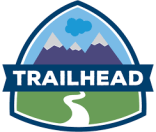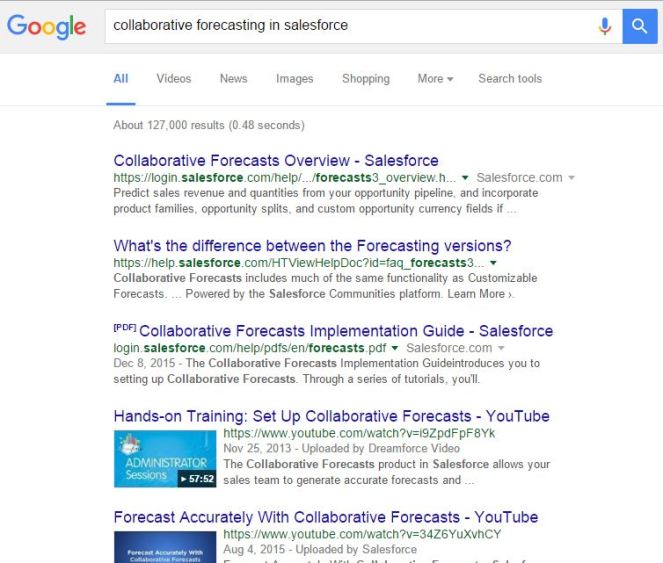I took my Advanced Administrator and Platform App Builder Exams back-to-back on Saturday, January 16 and passed both! Yes!
This post covers how I studied for the Salesforce Advanced Administrator Builder exam and the resources I used. I also write a post to cover how I studied for the Platform App Builder exam, you can read more about it here.


The Salesforce Advanced Administrator exam is a 90-minute exam of 60 single or multi-select questions. The passing score is 65%, or 39 correctly answered questions.
Note: The Salesforce Administrator certification is a prerequisite to the Advanced Administrator certification.
1. Review the Concepts in the Salesforce Advanced Administrator Study Guide & Group Objectives by Their Weightings
First, I reviewed the Salesforce Advanced Administrator Exam outline. Split the list of objectives into two categories: one with the heaviest weightings and the second with weightings under 10%.
I decided to focus most of my study efforts on the first category (heaviest weightings). If you answer all the questions correctly in this first set of objectives, then you will pass the exam.
- Security and Access (20%) [12 questions]
- Process Automation (13%) [8 questions]
- Sales Cloud Applications (10%) [6 questions]
- Service Cloud Applications (10%) [6 questions]
- Change Management (10%) [6 questions]
- Reports & Dashboards (10%) [6 questions]
I did not want to assume that I would get all the questions correct in the category below so I wanted to make sure I had some understanding of the lower weighted objectives. But since I would only be asked 2-5 questions on each objective below, I didn’t spend a lot of time to know the ins and outs of each concept.
- Extending Custom Objects and Applications (8%) [5 questions]
- Auditing and Monitoring (6%) [4 questions]
- Content Management (3%) [2 questions]
2. Perform a Self Assessment on the Objectives and ID Areas Needing Knowledge Improvement
Once I reviewed the objectives above, I did a self assessment of where I thought I stood against each objective. For areas where I identified as strong areas, such as security and access, and business logic and process automation, I then identified concepts under those objectives that I wasn’t as strong in.
Let’s use security access and process as the example. I identified that territory management and delegated administrator – custom objects as an area where I need to boost my knowledge.

While the Salesforce orgs I’ve worked or work on use Sales Cloud and Service Cloud, I’m not have no or limited knowledge of these specific features, so I know I needed to concentrate studies there.

3. Increase Your Knowledge. Hit the Trails….
Now that you’ve identified the areas you need to improve your knowledge in, it’s time to go and learn the concepts.
Review the recommended training in the Salesforce Advanced Administrator Study Guide.
If you have Premier Support, you have access to free online training via Help & Training and can take the self paced online training. I took all the below trainings.
- Administrator Essentials for Experienced Admins
- Setting Up Salesforce CRM Content
- Administering Salesforce Knowledge
- Administering Entitlements
- Setting Up Collaborative Forecasts
For those less seasoned system administrators and developers, you may want to take the instructor-led Administrator Essentials for Experienced Admins (ADM 211). I find it easier to learn in a real classroom setting where you can ask questions of the teacher. They also will focus on the areas of the exam. Do Note: This course will run you or your company, $3,400 and I heard it doesn’t cover the Service Cloud applications.
If you are a seasoned Salesforce system administrator or developer, I would not recommend the instructor-led ADM 211 class. Save the money. If you do have premier support, go to the self paced Administrator Essentials for Experienced Admins trainings and review the sections that you are not as familiar with.
I took the above 5 online training courses above and found only certain portions of the Administrator Essentials for Experienced Admins training helpful. This is because I was already familiar with most of the concepts from I working in Salesforce for 3 years now.
Don’t have Premier Support? No fear. There are still plenty of resources out there.
- http://www.sfdcstudy.org/adm-211-certification/ – I found this a great resource and went through the study guide for each section.
- Ryan Lorenzen’s A Better Study Guide For The Advanced Admin (ADM-211) Exam – Another great study guide resource with links to topics.
- Mohith Shrivastava’s From Administrator To Advanced Administrator of Salesforce CRM and Force.com Applications – Another study resource
- Shell Black’s Whiteboard series. I watched these videos. Explanation of concepts using real life examples:
- Learn via Trailhead.
 |
Trailhead is Salesforce’s free online learning tool. It is THE BOMB. You have challenges and questions at the end of each unit to practice the concepts. While I’ve completed all the modules already, I did go back through some of the modules as refreshers. |
- Google is your friend. Google the topic, such as “collaborative forecasting in salesforce”. I reviewed the results that are produced by Salesforce Docs team (i.e. URLs containing salesforce.com). I found the Help & Training docs most helpful. If you’re a visual person and need to see how things are configured, there are plenty of YouTube videos out there. I would view the ones that have a more recent published date as those would cover Salesforce’s most recent functionality in that area.

As I take the trainings or learn more about various concepts, I will take notes for each concept, with particular attention to feature limitations, things to consider and be aware of.
4. Grab a Personal Developer Org and Practice Those Concepts
After I’ve learned the concepts, I find I retain information better if I’ve practiced it versus truly relying on pure memorization. I’d suggest going into Salesforce setup and familiarizing yourself with the configuration screens and the options available.
I’ve found a few exam questions that I would’ve been able to answer if I remembered the configuration options, especially for areas I’ve not used.
If you don’t have one already, get a free personal developer edition org. Use it to practice the concepts you’ve learned. Practice concepts via the Trailhead challenges
5. Familiarize Yourself Mock Exam Questions
At this point, I’ve done a lot of studying. I think I know the concepts. Let’s out the knowledge to the test with mock exam questions.
I don’t know about you, perhaps, this is just personal preference, but the 5 mock exam questions provided in the study guide aren’t enough for me. I need MOAR! I need to get a better sense of the type of questions I will be asked and how I would potentially do on the exam.
I know some people rely on flash cards on sites like quizzlet, but I found that I can’t always rely on those being correct or to be updated over time.
Here are good resources for mock exams. I’ve found them to be accurate. When in doubt of the answer, check it against Salesforce Help & Training.
- Mock Advanced Administrator quizzes and section quizzes: http://www.sfdcstudy.org/adm-211-certification/adm-211-quizzes/. I liked going through the section quizzes to see how I fared on each topic and if I didn’t score very high 80% or higher, that is an indicator to me that there is still more learning work to be done in that specific area. Review the incorrect answers and understand why the answer was incorrect. Go back to Step 3, rinse and repeat.
- 10 Mock questions: http://focusonforce.com/salesforce-advanced-administrator-301-certification-practice-exams-and-questions/. For $12, you can purchase 5 practice exams, over 300 questions in total. While at the time, these mock exams were not available, I have reviewed the exam questions, these are good to help you prepare.
6. Daily Routine: Take Mock Exams and Study Notes
I continued to review my notes and took a mock exam or two every day. Once I consistently scored 80% or higher (I know the passing score is 63%. I rather score higher knowing that the questions on the exams will be different and I may not score as high.), I felt I was ready to take the exam.
It’s Show Time, Moment of Truth: Exam Day
Here’s how I tackled the Advanced Administrator exam.
- Read each question slowly. Read it twice if you need to. Look out for keywords like EXCEPT, TRUE, FALSE and for multi-select answers, pay attention to the number of correct answer items.
- In some cases, take notes on the scrap paper. I broke down some of the security or data modelling questions by the various requirements and how I would solution it. Example: Requirement X = OWD to private, Requirement Y = Grant Access Via Hierarchy, Requirement Z = Permission set. Then read through the answers and select the one that matches your solution.
- Read through each answer slowly, carefully and twice, if you need to. There may be a very minor difference between some of the answers so if you skim the answer quickly, you may accidentally select the wrong one.
- Select the answer if you are confident is correct.
- Continue to read through the other answers.
- Rule out the ones that are obviously or logically not the answer.
- Not sure? Read through the remaining possible correct answers and make your best guess between the remaining options.
- If you find you are spending too long on the one question, mark the question as “Review” and come back to it after you’ve completed the 60 questions.
- Mark the question where you are not 100% confident as “Review”. Continue through the rest of the questions.
- Be mindful of the 90 minute time allocation. The timer will appear in the upper left hand corner of the screen as you go through the exam.
- Once you’ve gotten through the 60 questions, select Review Exam. This will bring you to a screen of all 60 questions and answers. Anything you marked for review has an asterisk in front of it.
- Look at the total number of questions marked for review. Assuming these answers are incorrect and the ones you thought you answered correctly are accurate, you can guessimate your score. Hopefully, your guesstimate score is well over 63%. You will need to assume that you may have gotten a certain percentage for your “correct” answers incorrect, so factor that into your guesstimate score.
- (Depending on how much time you have left…) I reviewed each question I marked for review. See if the answer I selected previously still holds. Most of the time, what you selected the first time, is what you should go with and is correct. I refrained from changing the answer unless I had a strong compelling rationale to.
- If I am more confident in my answer, I would unmark the question for review and recalculate my guesstimated score.
- At some point, you need to come to the conclusion that you’ve done all you can and looking at those questions marked for review is no longer productive. It’s time to click on the “Submit Exam” button.
I wish you the best of luck on your exam!
-Jen
Feel free to comment and add resources that helped you out.
